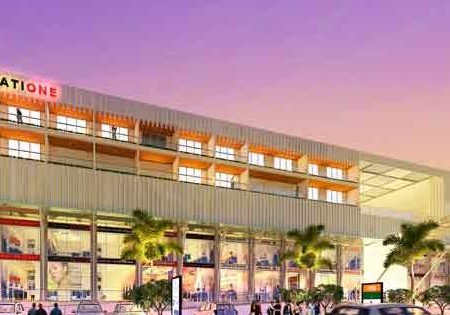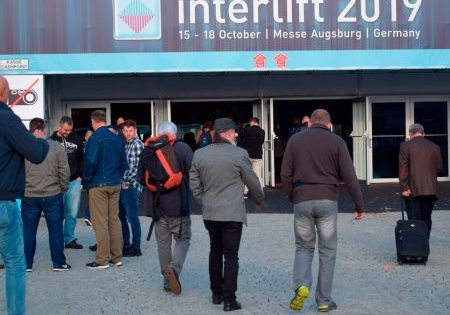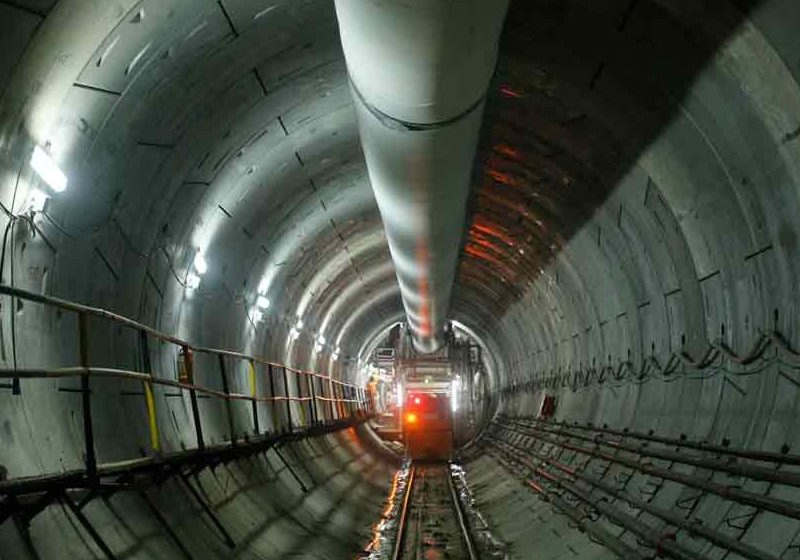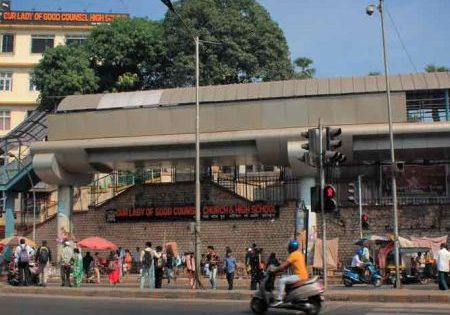Spiritually Uplifting
Jan 1, 2020
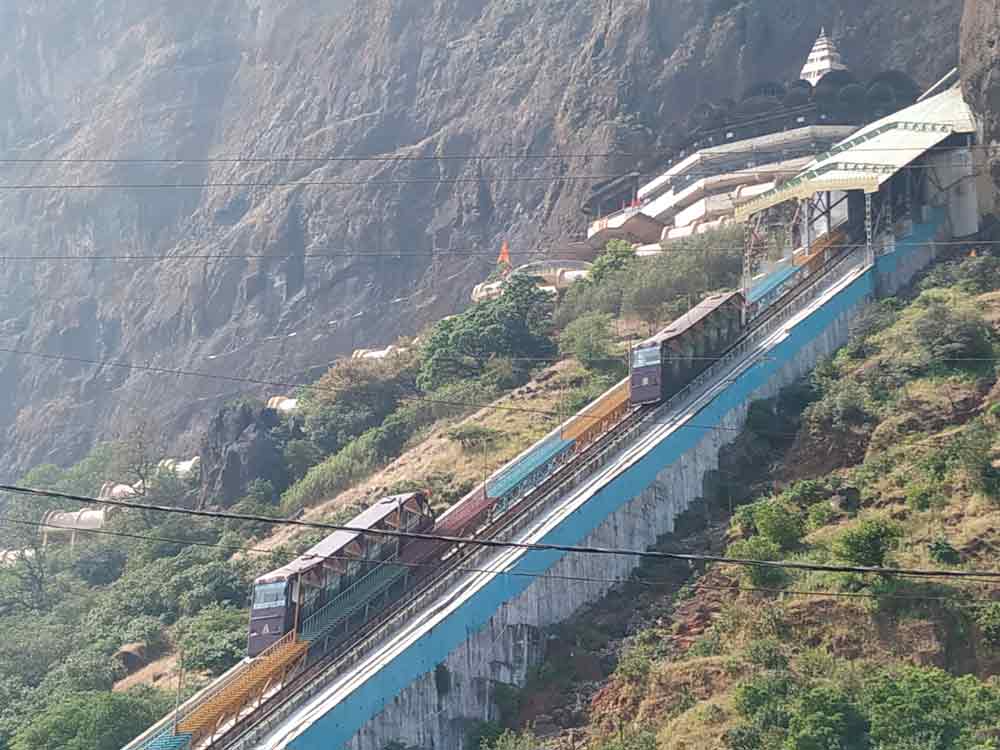
Your author presents a first-person account of a visit to the Saptashrungi Temple and the holy shrine’s funicular trolleys.
Visiting a place of worship, especially a revered holy shrine, is considered very auspicious, which is why we tend to do this at every age and stage of our lives. Be it as infants, students hoping to ace important examinations, couples seeking wedded bliss just after their marriage or senior citizens looking for a peaceful departure in their twilight years, visiting a shrine for blessings is an integral part of the life cycle.
However, this is sometimes easier said than done in India, where most of the shrines are classified based on accessibility: the more difficult and higher the climb required, the more popular the temple. With the elder generation given to insisting on offering prayers at such specific spots, managing the entire family (three generations, usually aged below 6 years to 60-plus years old) can be akin to “Mission Impossible” and equally hazardous — if not more so.
In some cases, the uneven, natural pathway is replaced with a proper staircase. But, even then, with steps sometimes numbering more than the combined ages of all family members, reaching the top can be a real test of endurance. One begins to wish for a modern-day miracle, in which prayers are answered, and all these problems get solved for existing and future generations.
Well, occasionally, that does happen, provided one has the patience. The phrase “optimism is the faith that leads to achievement, as nothing can be done without hope and confidence” aptly relates to one such scenario in which there has, indeed, been a miracle, but one of technology leveraging a relatively lesser-known form of vertical transportation (VT).
I am referring to the funicular trolleys installed to provide comfortable access to pilgrims at Saptashrungi Temple in Vani, 60 km from the city of Nashik in Maharashtra. The project was initiated by the Public Works Department, Government of Maharashtra (PWD), in 2010, but the placement and installation work was delayed due to unforeseen circumstances. Patience paid off, however, and it was finally completed and made fully operational in 2018. Surpassing all the challenges encountered, it became the first funicular trolley in India.
It was constructed by the PWD and is operated by Suyog Gurbaxani Funicular Ropeways Pvt. Ltd. as a build-operate-transfer project in consultation with Promekhnizatse Consultants of Ukraine, according to PWD Deputy Engineer K.R. Kedar, as per an article on yourstory.com. R.R. Hande, the PWD superintending engineer in Nashik, told news service IANS that the funicular climbs an elevation of almost 330 ft, enabling pilgrims to reach the top of the hill within 3 min.
Earlier, ascending the temple required making a grueling climb of 510 steps, which could take between one and two hours — more during weekends, when the temple attracts larger crowds — making it difficult for senior citizens and children. Before the funicular, those unable to make the climb had to be carried up the steps in a traditional doli.
While this ensured a livelihood for the villagers, lifting the doli was somewhat uncomfortable for them and the pilgrims. It was also a bit risky, given the number of stairs and height involved. In fact, the funicular trolley system is considered a savior both by the nearby villagers, for whom it is providing a decent level of employment, and by the people visiting to worship the goddess. To cater to the extra rush of pilgrims, PWD and temple authorities are building a parking lot at the base of the hill that can accommodate more than 200 vehicles, plus a market, eateries and other facilities and amenities. Separate lifts have already been installed to provide access to the parking lot.
Experiencing the Ride
The ride up offers a view of the surrounding lush, green and often misty forests on all sides, reportedly teeming with rare medicinal plants and herbs. The rugged seven hill peaks that give the temple its name — Sapta (seven) and Shrungi (peaks) — come into view at the top, where Saptashrungi Devi’s imposing abode stands. This is also as one of the 51 Shakti Peethas in India. The temple is many centuries old and features an idol of the 18-armed Saptashrungi Mata; the surrounding forests (Dandakaranya) even find a mention in the Ramayana.
A recently published article in Business Standard featuring the Government of Maharashtra PWD said about 500,000-600,000 devotees visit the temple during Chaitrotsav and Navaratrotsav. The pilgrims visiting on Tuesdays, Fridays and Sundays typically number 7,000 to 8,000, while the other weekdays see an average of about 3,000 visitors. The temple sits at a height of 100 m above the village.
The funicular trolley system is a novelty in itself, the first of its kind in India, and provides a safe and convenient mode to reach the temple. The project cost was about INR314 million
(US$4.4 million). The system consists of two bogies with a capacity of 60 riders each. It takes about 3-1/2 min. to climb the 168-m-long, 1.2-m-wide track from the village to the temple. There are two stations, one at the bottom and one at the top, which cater to the needs of devotees using the funicular.
A 25-room guest house was built at the bottom as part of the project.
While there are some devotees who believe the temple being situated at such a height is a way of testing their faith and thus undertake the somewhat arduous climb up the stairs (myself included), it was, indeed, heartwarming to see that there is an option available to those who, for various reasons, would prefer to avoid it. After offering prayers at the temple, I opted for the funicular trolley on the way down and experienced its benefits firsthand. It is, indeed, a godsend for all devotees and a way to worship at a height that is closer to the heavens without undertaking the risk and hardship previously associated with it.
Ropeways have become common in India at many adventurous and holy spots, but the funicular trolley concept has yet to take off, perhaps because elevators remain a preferred VT mode here. Such trolleys are a common sight in European countries, such as Switzerland. Switzerland is a mountainous Central European country and home to numerous lakes, villages and the high peaks of the Alps. It is home to the most fascinating and steepest funicular trolleys and railways, which are used by nearby locals for daily transportation and by travel enthusiasts drawn to explore majestic beauty from towering heights.
I found the funicular trolley system to be unique, because it is designed in such a way that the cabins automatically adapt to the inclination. The cabins and the seats of the funicular trolleys are placed in an ascending and descending order, providing comfort for the pilgrims, while avoiding any kind of jerking or falling incidents. Interestingly, one does not get a feel of steepness while traveling aboard the funicular. It reminds me of the amazingly designed Stoosbahn funicular railway in the Swiss canton of Schwyz, a design India can look forward to in the future.
There are many other temples in and around Nashik that have a great need for VT. One of them is Anjaneri Mata Mandir, the steps of which require about 3 hr to climb. The temple mostly attracts trekkers, but with many mythological stories attached to this place, a lot of people come here to worship.
It could become a very famous spot for tourists, if VT were provided. Locals with whom I spoke shared that a survey has been conducted, but no other action had so far been taken. For this very reason, many people just worship the huge idol placed at a temple-like structure situated few steps away and return back.
I sincerely feel VT is a must at such holy places so people can enjoy the view from the top and explore the locations on which mythological stories are based. This also allows them to get the firsthand experience of being able to offer prayers at the actual temple on the hilltop.
My observation during the visit was that the route going toward the main temple at the top is very dangerous, as the visitor must cover three mountains on stairs that are barely visible due to erosion caused by heavy rains. VT like the funicular trolley was possible at Saptashrungi Gadh, as the temple is attached to the hills. Anjaneri Temple is at the top, and one has to cross three mountains, along with extremely narrow and steep patches, to reach there, so one might opt for a ropeway, as is the case with Auli in the Himalayas.
Get more of Elevator World. Sign up for our free e-newsletter.


